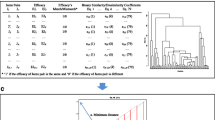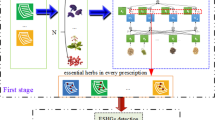Abstract
This paper analyzes the establishment of vector space model (VSM) of herbal prescription. Currently, VSM has been frequently used in knowledge acquisition and information retrieval. However, as VSM ignores the association between words, the herbal prescription can only be expressed with single Chinese herb as unit and the potential semantic information in herbal prescription cannot be fully reflected, which limits the clustering result of herbal prescription. This study investigates the significance of word co-occurrence for the research on the formulation theory of herbal prescription, verifies the association between the major function of herbal prescription between word co-occurrence and proposes the word co-occurrence-based VSM and expression method of second-order weighted eigenvalues. It can be concluded that the proposed method can achieve better effect in clustering analysis of herbal prescription comparing traditional VSM-based expression method.



Similar content being viewed by others
References
Deng Y, Wang Y, Teo KH et al (2015) A simplified space vector modulation scheme for multilevel converters. IEEE Trans Power Electron 31(3):1873–1886
Wu FJ, Zhao K, Sun L (2012) Simplified multilevel space vector pulse-width modulation scheme based on two-level space vector pulse-width modulation. Iet Power Electronics 5(5):609–616
Jacob B, Baiju MR (2015) A new space vector modulation scheme for multilevel inverters which directly vector quantize the reference space vector. IEEE Trans Ind Electron 62(1):88–95
Tong Z, Zhang H (2016) A Text mining research based on LDA topic modelling. In: International Conference on Computer Science, Engineering and Information Technology, pp 201–210
Mitrea D, Nedevschi S, Badea R (2018) Automatic recognition of the hepatocellular carcinoma from ultrasound images using complex textural microstructure co-occurrence matrices (CTMCM). In: International Conference on Pattern Recognition Applications and Methods, pp 178–189
Sun T, Peng Y, Yang F et al (2017) A self-adaptive text classification method based on multiple word embedding and neural network. Icic Express Lett 11(6):1133–1141
Liu AA, Su YT, Nie WZ et al (2017) Hierarchical clustering multi-task learning for joint human action grouping and recognition. IEEE Trans Pattern Anal Mach Intell 39(1):102–114
Hou J, Li D, Qiu C et al (2016) A semantic retrieval model based on domain ontology of orchard disease and pests. Chin J Electron 25(3):460–466
Saany SIA, Mamat A, Mustapha A et al (2017) Syntax and semantics question analysis using user modelling and relevance feedback. Int J Adv Sci Eng Inf Technol 7(1):329
Onan A, Korukoğlu S, Bulut H (2016) A multiobjective weighted voting ensemble classifier based on differential evolution algorithm for text sentiment classification. Expert Syst Appl 62:1–16
Yin W, Schnabel T, Schütze H (2015) Online updating of word representations for part-of-speech tagging. In: Conference on Empirical Methods in Natural Language Processing, pp 1329–1334
Giap TH, Dung NA, Thoa HT et al (2018) Phthalides and other metabolites from roots of ligusticum wallichii. Chem Nat Compd 54(1):1–4
Stojakowska A, Malarz J, Kiss AK (2016) Hydroxycinnamates from elecampane (Inula helenium L.) callus culture. Acta Physiol Plant 38(2):1–5
Pu X, Li X, Zhang W et al (2017) Preparation of chitosan/safflower and ligusticum wallichii polysaccharides hydrogel for potential application in drug delivery and tissue engineering. J Mater Res 32(14):1–9
Petkova NT, Ivanov I, Vrancheva R et al (2017) Ultrasound and microwave-assisted extraction of elecampane (Inula helenium) roots. Nat Prod Commun 12(2):171–174
Wang Y, Liang Y, Pediatrics DO (2018) Clinical efficacy of pseudo-ginseng, the root of red-rooted salvia, Hawthorn powder combined with atorvastatin in the treatment of hyperlipidemia. China Med Pharm
Acknowledgements
This paper is financed by the National Social Science Foundation of China (16BGL181) and the Natural Science Foundation of Shandong Province (ZR201702130105).
Author information
Authors and Affiliations
Corresponding author
Rights and permissions
About this article
Cite this article
Chen, S., Chen, Y., Yuan, F. et al. Establishment of herbal prescription vector space model based on word co-occurrence. J Supercomput 76, 3590–3601 (2020). https://doi.org/10.1007/s11227-018-2559-3
Published:
Issue Date:
DOI: https://doi.org/10.1007/s11227-018-2559-3




